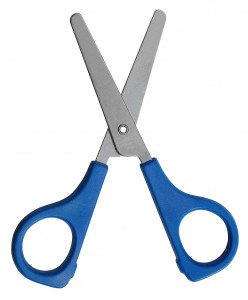Storytelling Starters ~ Tell it/Write it
 The differences between writing and telling a story are well worth thinking about – and from both points of view. Here are some of my observations.
The differences between writing and telling a story are well worth thinking about – and from both points of view. Here are some of my observations.
Cutting:
A told story can feel long-winded if it’s written in the same way as it’s told. In the telling, it has to feel like no uncomfortable gaps are made in the narrative of it. So for a start, if you’re writing it down, it’s best to prune out the ‘ands’ and the ‘buts’ you’d commonly use to fill the gaps when you’re telling. I learned this back in 1990 when I was putting together Time for Telling, the collection of children’s stories from around the world I’d been asked to make by Kingfisher Books. I assembled the collection by asking practising storytellers from all kinds of cultural backgrounds if they’d send me a favourite best story. A really good one that arrived from Scottish traveller storyteller, Duncan Williamson, needed to be pared quite a lot. He was, par excellence, a teller.
Elaborating:
Conversely, when you’re writing a story, you can afford to elaborate in the description, perhaps using more studied and literary phrases than when you’re in the act of telling. Telling, you’re taking the kind of pace that allows people to visualise things as you go. You want to leave room for them to see things for themselves. Writing, you can afford to do something different. You want to give your story the distinctive character that can only come from you. I’ve often observed this when writing down stories I tell, often to give as reminders to people in workshops or for the purpose of this blog. In those situations, I tend to keep the story to the minimum, emphasising the action. If I were writing the same story for a published book, I’d expect myself to beautify it, giving free rein to my own visualisation of it.
Managing time:
A written story can afford flashbacks and even flashes forward. These leave gaps in the chronological structure which the reader’s mind must fill. Told stories on the whole cannot do this – or where they do, the places where the gaps are left have to be very consciously chosen. Again this is because the storyteller is duty bound to take the listener on a journey and the journey has to feel complete and consistent. My editor at Pont Books made this point to me after I’d written Open Secret, my first children’s novel. She said I was writing as an oral storyteller. Now I didn’t have to say it all, I could manage time in a different way.
 Making comments:
Making comments:
Another thing an oral storyteller can do – perhaps by a pause and a change of voice – is to comment on the story that’s being told even as it’s in the telling. Of course storywriters can find ways to do this too. Yet it’s worth noting that it can be a particular freedom of the oral storyteller to do it. Making the occasional comment on the story you’re telling as you go along with it can be a good way to introduce humour, also perhaps to make a point about differences of attitude between the supposed period when the story happened and now. Have I done this myself? Yes, but I’m thinking about doing it more.
Why I’m making these points today:
In the early days of the UK’s storytelling revival, it didn’t feel like at all acceptable to admit that you could get stories from books, let along make them up or write your own versions. What’s lucky for us storytellers today is that, by now, it seems we’ve accepted that, historically in some of the great civilizations, oral and written literature went along side by side, borrowing from each other and developing together. As to why I am making this particular point today, well, I’ve been thinking a lot about it just lately. And why have I been thinking about it? I’m looking forward to revealing the answer next week.
PS: The bottom photo today is of the South American story doll that was given to me once by Kevin Crossley-Holland who, of course, is a great writer of stories.
Tags: commenting, Duncan Williamson, elaborating, Kevin Crossley-Holland, Open Secret, pruning, Time For Telling, writing a story



November 28th, 2016 at 9:18 pm
Dear Mary. This post makes such good sense. For me, the trouble with being literate it that, how I learned to write in school became such an automatic, unconscious process.
I wish my English teacher had explained these differences.
Recently I’ve been puzzling over an Aussie teachers’ maxim in literacy ” we speak to build relationships and write to express ideas” Thought I did this all orally.
Thanks for these helpful distinctions.
And, congratulations on the book! Look forward to reading it.
Meg
November 28th, 2016 at 11:38 pm
And Storyworks Press! Good on you!
November 29th, 2016 at 8:31 am
Dear Mary – A new book – and Storyworks Press – how exciting. Looking forward to reading the book and thank you for the interesting blog as always Mary . Jean x